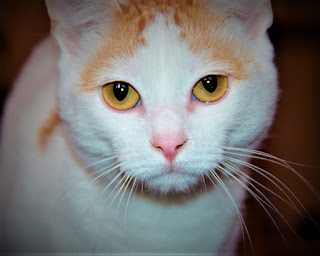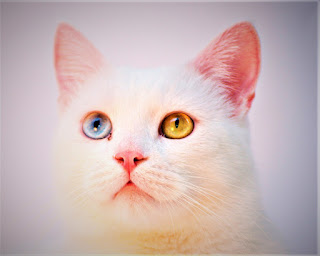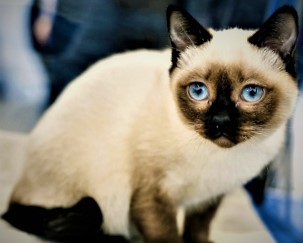The Turkish Van: A Unique and Playful Feline Treasure
Introduction
The Turkish Van is a rare and captivating cat breed known for its striking appearance, love of water, and energetic personality. Often called the “swimming cat,” this breed stands out for its distinctive markings and playful nature. In this article, we’ll explore the history, characteristics, care needs, and fun facts about the Turkish Van—helping you decide if this unique feline is the right companion for you.
History and Origin of the Turkish Van
The Turkish Van traces its roots back to the rugged Lake Van region in Eastern Turkey, where it has been a natural breed for centuries. Unlike many domesticated cats, the Turkish Van developed without human intervention, adapting to its environment with a semi-long, water-resistant coat.
- Ancient Heritage: Legends suggest these cats have existed for over 5,000 years.
- Western Discovery: First brought to Europe in the 1950s by British photographers who noticed their love of swimming.
- Breed Recognition: Officially recognized by cat associations in the 1970s.
Physical Characteristics: What Makes the Turkish Van Unique?
The Turkish Van is easily recognizable by its distinctive color pattern and athletic build:
- Coat: Semi-long, silky, and water-resistant.
- Color Pattern: Predominantly white with colored markings on the head and tail (known as the “Van pattern”).
- Eyes: Often odd-eyed(one blue, one amber) or both in matching shades.
- Body: Muscular, medium to large size, built for agility and strength.
Personality & Temperament: The Playful Swimmer
Unlike most cats, the Turkish Van adores water—earning its nickname, the “swimming cat.” Here’s what to expect from their personality:
- Energetic & Playful: Loves interactive toys, climbing, and games.
- Water-Loving: May join you in the shower or play in a sink.
- Intelligent & Curious: Quick learners who enjoy puzzle toys.
- Affectionate but Independent: Forms strong bonds but isn’t overly clingy.
Caring for a Turkish Van: Health & Grooming Tips
Despite their luxurious coat, Turkish Vans are relatively low-maintenance:
- Grooming: Brush weekly to prevent tangles. Their coat sheds seasonally.
- Diet: High-protein meals to support their active lifestyle.
- Exercise: Needs plenty of playtime and climbing opportunities.
- Health: Generally robust, but watch for HCM (Hypertrophic Cardiomyopathy)—a genetic heart condition.
Fun Facts About the Turkish Van
- Not Your Average Cat: Most cats avoid water, but Turkish Vans swim naturally.
- Survivors of Legends: Some believe they survived Noah’s Flood by swimming.
- Rare Breed: Still uncommon outside Turkey, making them a prized pet.
Is a Turkish Van Right for You?
This breed is ideal for:
✅ Active families or individuals
✅ Those who enjoy interactive, playful pets
✅ People who don’t mind a cat that might splash in their bathtub
Not ideal for:
❌ Those who prefer a calm, lap-only cat
❌ Households that can’t provide enough stimulation
The Turkish Van is a rare gem among cat breeds—athletic, intelligent, and irresistibly charming with its love for water. If you’re looking for a unique feline companion that breaks the mold, the Turkish Van might be your perfect match.
Would you adopt a Turkish Van? Let us know in the comments!
Turkish Van, Turkish Cat
Profile of Turkish Van Cat
The Turkish van breed is undoubtedly one of the oldest. One legend says that these cats appeared near Lake Van, which is near Mount Ararat. And this happened, no less, in the time of the Old Testament Noah.
One of the animals on the ark was a cat. He decided to explore the expanses around the ark and found the Salt Lake Van, located on the same plateau as Mount Ararat.
A less romantic legend says that cats arose naturally in Lake Van. They grew and developed as a species in the wilderness of those places and learned to swim and fish. The modern Van cat carries the genetic traits of its ancestors, has no fear of water, can swim, and enjoys the water.
Later, these cats were brought to Europe by the Crusaders. Be that as it may, the breed of the Turkish Van cat belongs to one of the oldest breeds, and proudly carries this status. Regardless of whether they came down from Noah’s Ark or not, these cats have many unique qualities, are
very much appreciated all over the world, and are still found in the natural environment near Lake Van. Although extremely rare.
The modern development of this beautiful breed in European countries began in the UK in 1955. Two female photographers, Laura Lushington and Sonya Halliday, brought a pair of Van cats from a trip to Istanbul – a male and a female, with red markings on the head and tail. For four years, they successfully bred offspring, after which they brought another pair of vans from Istanbul, and continued what they started.
The breed was officially recognized in England in 1969 under the name “Turkish cat”. Later, the name changed to Turkish Van. The International Cat Association (TICA) granted the status of Champion of Turkey to this breed in June 1979.
Characteristics
of the Turkish Van
How do I know if my cat is a Turkish Van?
Adaptability 10/10
Attachment to the family 10/10
Gaming activity 10/10
intelligence 10/10
General health 09/10
Wool fallout 06/10
Friendliness to children 09/10
Friendly to dogs 10/10
Love of meows 10/10
Breed
Information about Turkish Van
| Country of origin | Turkey |
| Lifetime | 12-17 years |
| Size | medium-large |
| Weight | Cats: up to 7 kg, Cats: 5-6 kg |
| Coat type | longhair |
| Color | white with characteristic colored markings on the head and tail. |
| Lifestyle | outdoors / indoors |
Turkish van cat price |
400 – 600 $ |
How much does a Turkish Van kitten cost?
What is the description of a Turkish Van cat?
How rare is a Turkish Van cat?
The Turkish Van cat is indeed a special breed. A great love of water, the ability to swim and hunt both in the water and on land, as well as an outstanding intellect, make the Vans extremely interesting pets.
These cats are very flexible, muscular, and strong; they are created for hunting, can climb any tree, and rarely have problems getting down from it. The hind legs are slightly longer than the front ones, the chest is wide, the chest, ears are medium, and the tail is fluffed. Males are much larger than females. The head is rounded, wedge-shaped, and the eyes are amber or blue.
He will become your loving and affectionate companion, very intelligent, but with his character and view of many issues and events that surround him. You need to find a common language with the Vans since it is almost impossible to suppress their character.
What is the personality of the Turkish Van cat?
Are Turkish Vans aggressive?
A distinctive feature of the Vans is very high intelligence, which gives rise to a certain isolation and the ability to deeply perceive all phenomena. The cat concludes, but, as they say, “on his mind.” On the other hand, if proper socialization is carried out while the pet is still a kitten, you will be able to form a much more open character.
With other pets, the cat should feel at the top of the domestic hierarchy. Then he will be calm and satisfied with himself. These cats like to lie in the water in hot weather, swim perfectly, and love to hunt, so forget about the fish in the open aquarium. Small pets like guinea pigs, hamsters, and parrots may also not survive the acquaintance with a hereditary hunter.
On the other hand, the Turkish van is able to show great love and affection for his family, despite the fact that he feels comfortable alone. He is a wonderful climber, loves to climb trees, he is a flexible and strong cat, he can catch toys on the fly, and he shows miracles of agility. Vans normally perceive children if they are not too intrusive, but guests and unfamiliar people are treated with caution.
This breed is quite wayward and does not like restrictions. If the cat does not like anything, from stroking and ending with an abundance of children’s attention, he will let you know. Also, pay attention to his nose – if the cat is angry, the nose turns from pink to red.
Love of water can also cause trouble. A Turkish van can fall into the toilet, he can learn to open water taps on his own, not to mention the
doors to the bathroom.
Common Diseases in Turkish Van cat
Generally speaking, the Turkish Van breed is distinguished by good health inherited from its ancestors. They have an excellent appetite, good
immunity and endurance.
However, there is a slight tendency to hypertrophic cardiomyopathy. Unlike some other breeds, in vans, the transmission of a predisposition to this disease by inheritance has not been proven. The life expectancy of vans is 12-17 years.
How to take care of a Turkish Van cat?
Nature itself has adapted these cats to swimming since they do not have an undercoat. This greatly simplifies the care, and it is not even necessary to use a rough metal brush. Ordinary plastic will also do, with its help, once a week, you can remove dead villi. The coat falls out weakly, in spring and autumn, during the period of renewal of the cover.
Usually, a Turkish van takes a shampoo bath at least once a month, but you should ensure your pet has access to water. It can be a simple bath with toys, without shampoo. Moreover, this may have to be done often.
Claws are trimmed at least once every two weeks, ears need to be checked every week, and teeth should be brushed every day. The tray should be kept clean; the vans are very demanding in this matter.












